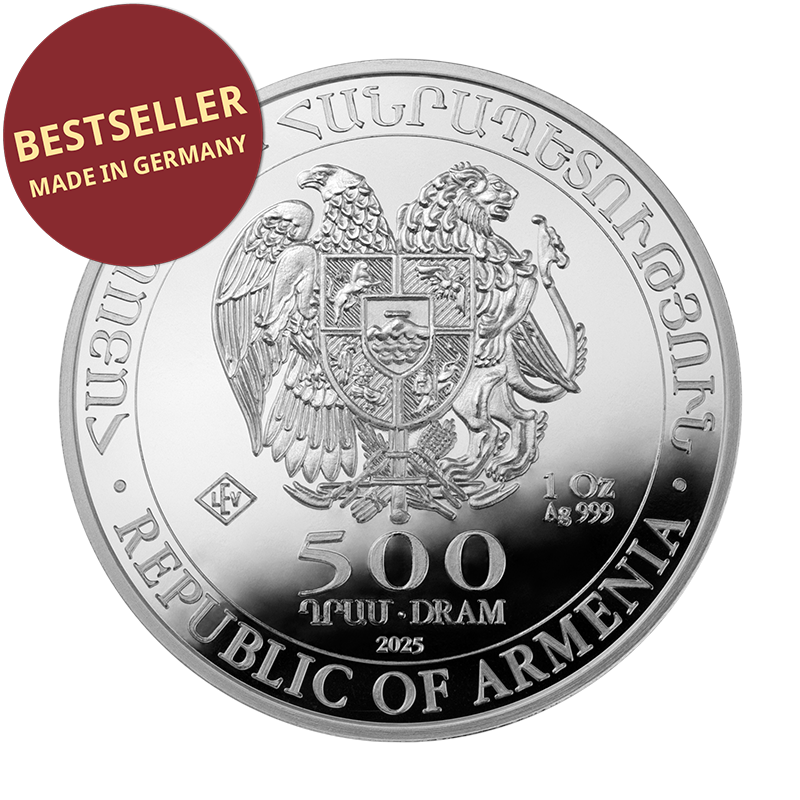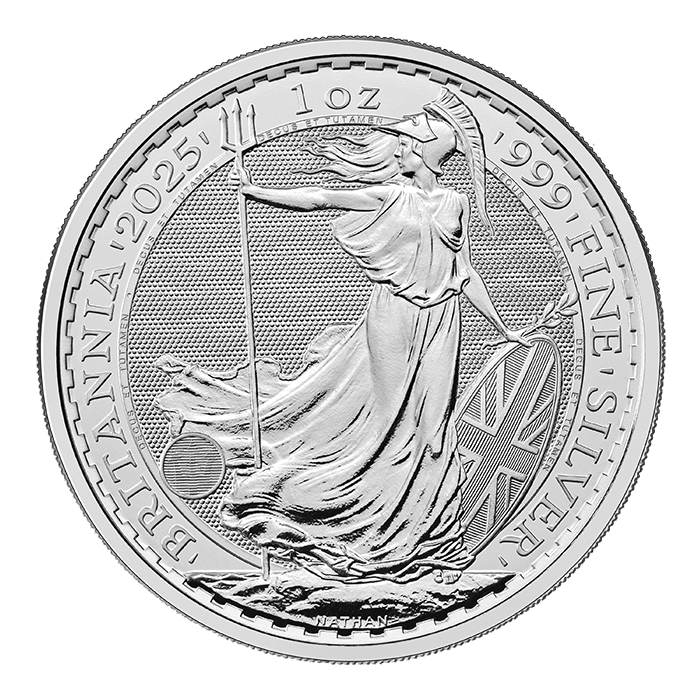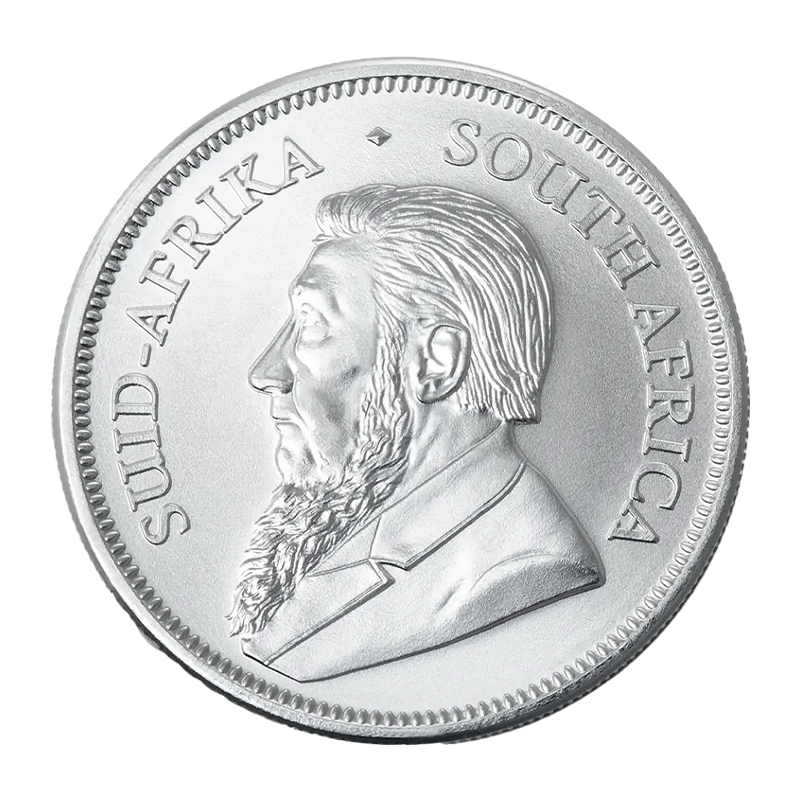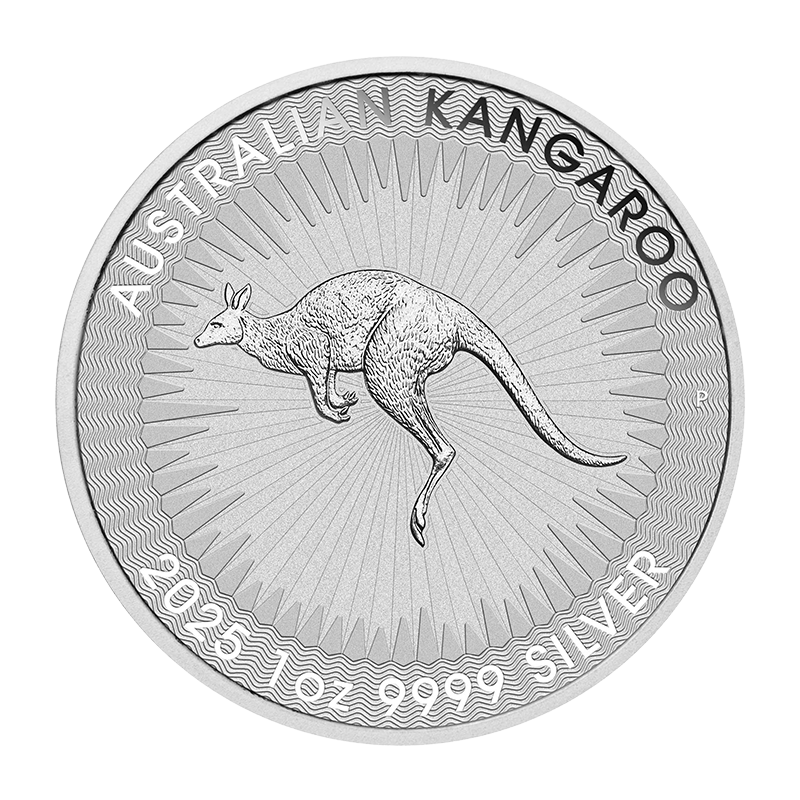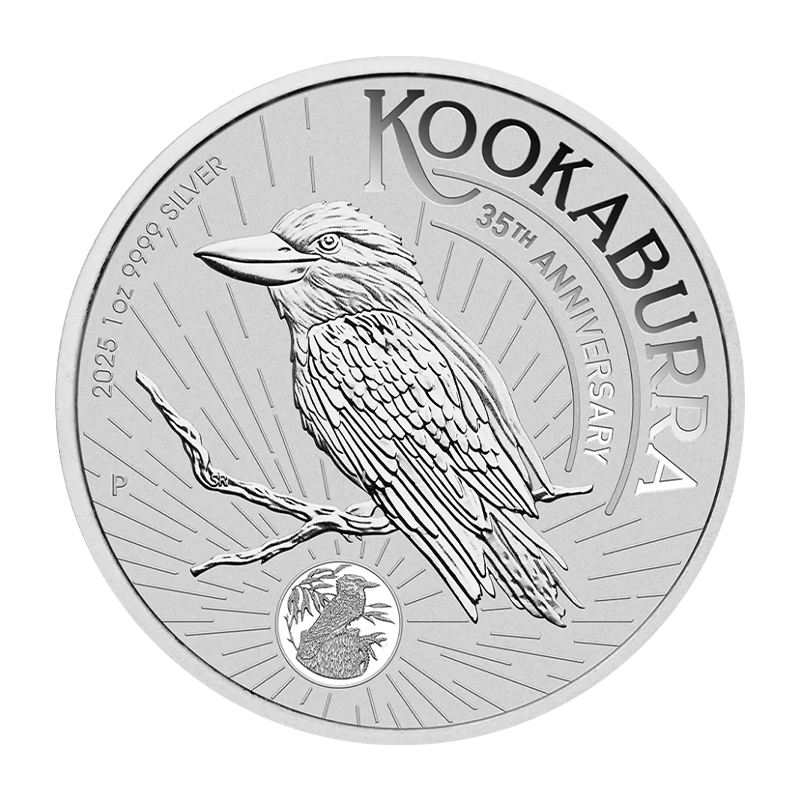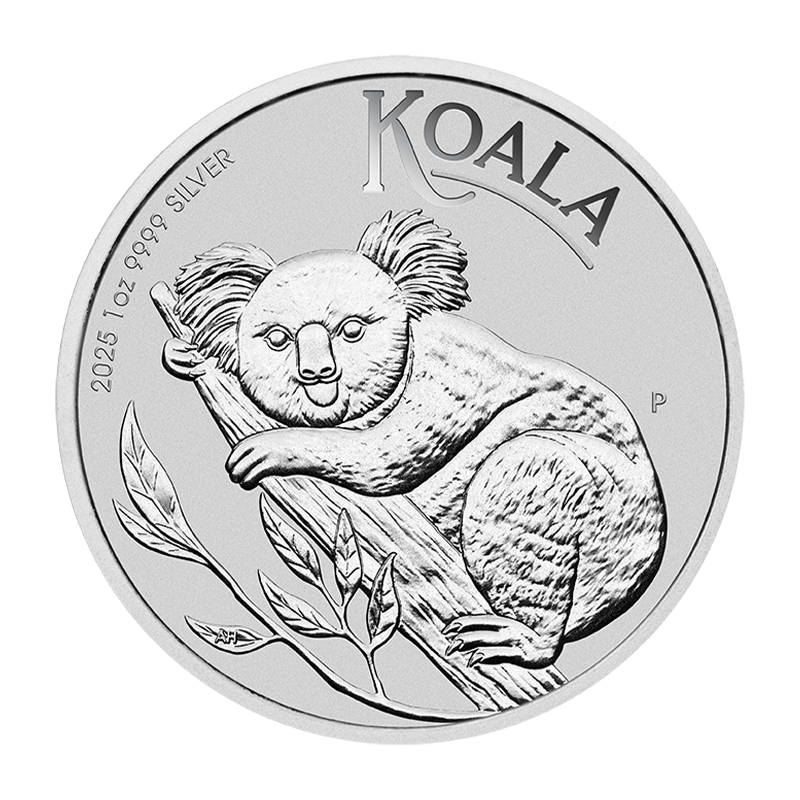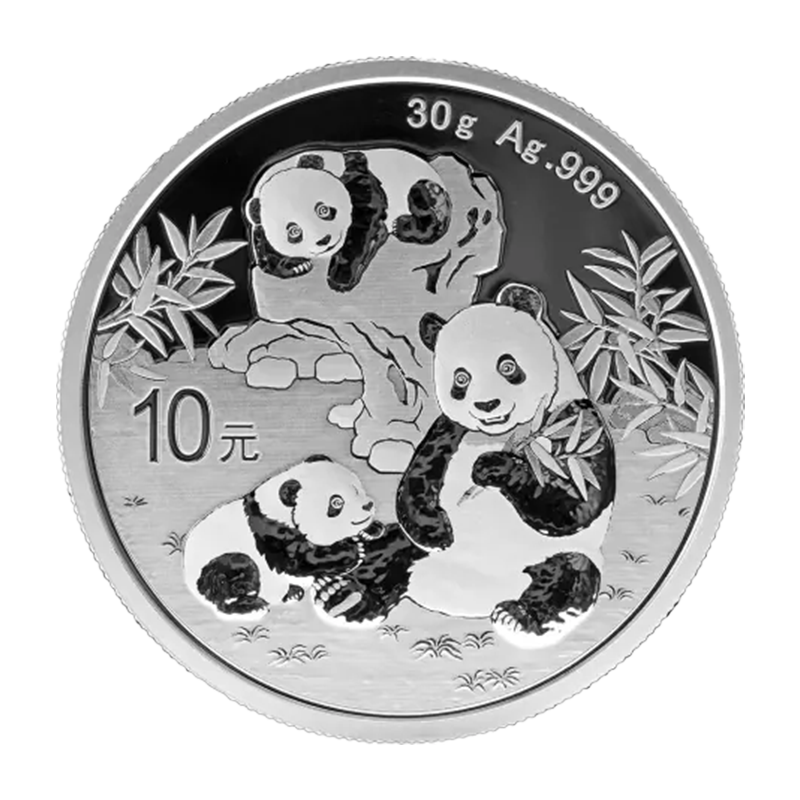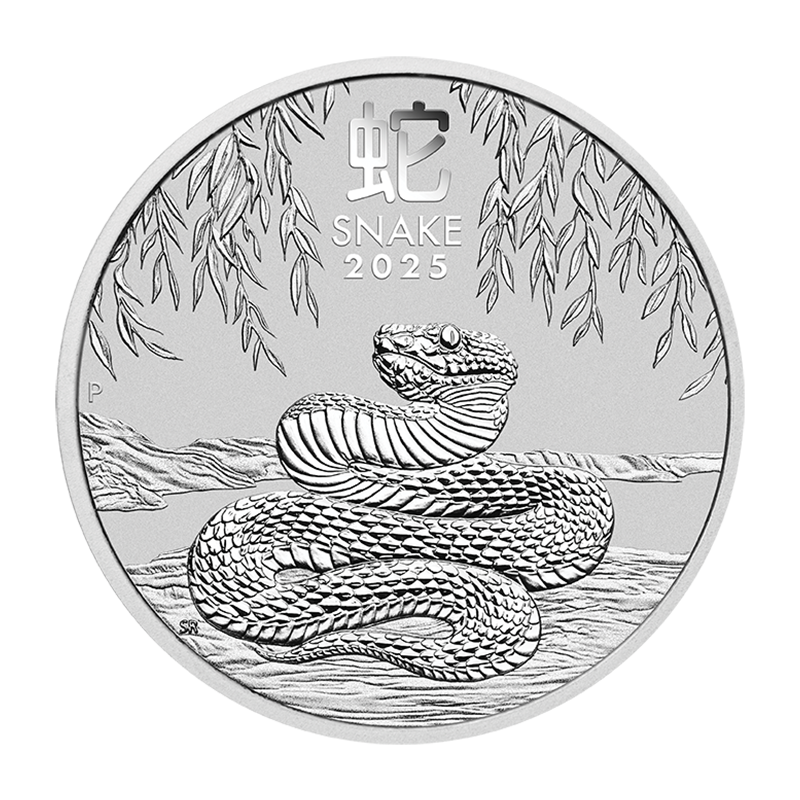Current silver price 2025
The current silver price at a glance: The most important price data for silver in euros (EUR) and US dollars (USD) is transparent, up-to-date and reliable. The prices refer to common weight units such as 1 gram, 1 troy ounce (oz) and 1 kilogram. The offer is supplemented by a detailed silver chart, which provides you with a clear overview of the price development. This allows you to keep track of trends, daily changes and historical values.
Precious metals prices at a glance:

Interesting facts about the silver price
Silver has been one of the most important commodities in the global economy for centuries. Its price not only reflects supply and demand, but also overarching developments on the financial and commodity markets. As a precious metal with industrial relevance and growing importance for investors, the price of silver is closely linked to global trends. A look at the market therefore often reveals more than just a price indication - it shows a multi-layered interplay of economic forces.
The most important facts in brief
- If you want to trade in silver, you should read up extensively beforehand or seek advice from experts
- Current developments: Geopolitical events, inflation expectations and industrial demand have a significant influence on price movements.
- Trading centres & quotation: Silver is traded internationally, including on the COMEX (New York) or the Chicago Board of Trade, with the price quoted in troy ounces.
- Increasing investment interest: Silver will remain a sought-after investment product in 2025 - both for diversification and as protection against currency risks.
What does the silver price say?
The silver price provides information about the current market value of silver and is usually quoted in US dollars per troy ounce. It reflects the relationship between supply and demand as well as expectations of economic developments, inflation and currency stability. As silver is in high demand both as an investment and in industry, the price reacts sensitively to global events.
A rising silver price can indicate increased demand, falling supply or economic uncertainty. Conversely, a falling price often indicates an easing on the markets or lower industrial demand. For investors, the price of silver serves as a central basis for decisions on buying, selling or long-term investments.
What influences the silver price?
The price of silver is the result of a combination of many factors and reacts sensitively to changes in the global market environment. As a precious metal with a dual role - both in industry and as an investment product - silver is particularly susceptible to external influences. If you want to understand and assess the silver price, you need to know the most important influencing factors.
Supply and demand
As with most commodities, the price of silver is determined by the relationship between supply and demand. If industrial demand increases while supply remains the same, the price of silver generally rises. Conversely, an oversupply can lead to falling prices.
Economic and geopolitical situation
In times of economic uncertainty or political crises, interest in precious metals as ‘safe havens’ increases. Investors then increasingly focus on gold, silver or other precious metals, which increases demand and thus the price. When the situation stabilises, capital often shifts back into other forms of investment.
Inflation and monetary policy
Rising inflation or a loose monetary policy (e.g. low key interest rates) often lead to a higher silver price. The reason: silver is considered a commodity with a stable value that is suitable for hedging against the loss of purchasing power. Falling inflation rates or rising interest rates, on the other hand, can have a price-dampening effect.
Exchange rates
Silver is mainly traded worldwide in US dollars. A strong dollar makes silver more expensive for buyers outside the dollar zone - which can curb demand. Conversely, a weak dollar boosts international demand and can cause the price to rise.
Example:
If the US dollar strengthens against the euro, buyers from the eurozone have to pay more euros for the same amount of silver - the silver price in euros rises. Conversely, a weaker dollar can lower the price of silver from the perspective of European investors. Monetary policy and statements by leading central banks therefore also indirectly influence the silver price trend.
Who determines current silver prices?
The price of silver is not set by a single institution, but is determined by supply and demand on the international commodity markets. Particularly relevant are the price determinations on major trading centres such as the COMEX (New York Mercantile Exchange) or the London Bullion Market, where silver is traded daily.
Market participants such as banks, funds, industrial companies and private investors influence the price trend through their buying and selling decisions. There are also reference prices, such as the LBMA Silver Price, which is fixed once a day by selected banks and serves as a global benchmark.
Historical performance: Milestones for the silver price
The history of the silver price is characterised by strong price fluctuations, historic highs and significant crises. At the same time, it is inextricably linked to the economic and political development of the world.
1970-1980: Historic highs due to commodity speculationIn the late 1970s, the price of silver rose rapidly and reached an all-time high of around USD 49.45 per troy ounce on 18 January 1980. This was due to massive speculation - particularly by the Hunt brothers, who attempted to control the silver market and further fuel the silver trade. There were also concerns about inflation and political uncertainties. Following the intervention of the US Federal Reserve and the end of the speculative bubble, the price fell quickly and significantly.
1980-2000: Long phase of low prices
After the collapse of the speculative boom, the silver price went into a long period of sideways movement. Over two decades, the price mostly fluctuated between USD 5 and 7 per troy ounce. A stable global economy, a strong US dollar and low inflation concerns contributed to the fact that silver was hardly in demand as a safe haven.
2000-2011: Upswing due to financial crisis and commodities boom
With the start of the new millennium and increased uncertainty on the financial markets, silver became more attractive again. Between 2003 and 2008, the price rose continuously, driven by growing industrial demand and increasing interest from investors. In the wake of the global financial crisis, silver peaked again on 28 April 2011 at around USD 48.70 per troy ounce - just below the historic high of 1980.
2012-2019: correction and consolidation
After the high in 2011, a longer correction phase followed. The price of silver fell significantly and stabilised between USD 15 and USD 20 per troy ounce. This was due to the economic recovery, a strong stock market and declining inflation. Despite fluctuations, silver tended to remain in the background of investors' interests during this period.
2020-2025: New impetus from pandemic, inflation and energy transition
The COVID-19 pandemic, monetary policy measures and rising inflation rates led to a renewed appreciation of silver from 2020. The price reached a high of over USD 29 per troy ounce in August 2020. Silver also remains in demand in connection with the energy transition and the expansion of renewable technologies - particularly due to its role in the solar industry. In 2025, the price of silver is moving in a dynamic environment between geopolitical tensions, interest rate policy and industrial demand.
The silver market: demand vs supply
As with any commodity, the interplay of supply and demand determines the price on the silver market. However, silver occupies a special position as it is in demand both as an investment and as an industrial material. In contrast to gold, a significant proportion of the silver mined is actually consumed - for example in technical applications - and is therefore permanently lost to the market. This makes the price of silver more sensitive to fluctuations in supply and industrial demand, which means that changes often have a more dynamic impact on the price.
Silver demand: who is actually buying silver?The global demand for silver is spread across several sectors:
- Industry & technology: Industrial applications account for the majority of the global demand for silver. Besonders in der Elektronik, Photovoltaik (Solarzellen), Medizintechnik und Automobilindustrie ist Silber aufgrund seiner hohen Leitfähigkeit und antibakteriellen Eigenschaften unverzichtbar. This demand makes the price of silver particularly susceptible to economic developments.
- Private investors & investors: Silver is considered gold's ‘little brother’ and is often used for portfolio diversification and as inflation protection. In times of crisis, the demand for silver coins and bars often increases significantly - especially among private investors who prefer smaller denominations.
- Jewellery industry: Even if the proportion is lower than for gold, silver plays an important role in the jewellery sector. Especially in Asian markets, silver jewellery remains a popular choice due to its lower price.
- ETFs & derivatives: Exchange-traded products such as silver ETFs or futures are increasingly influencing the market, as they can move large quantities of physically deposited silver - often independently of real economic demand.
Silver supply: Where does the silver come from?
The global silver supply mainly comes from the following sources:
- Primary mining: the majority of traded silver is extracted in mining - often as a by-product of lead, zinc, copper or gold mining. The production volume is heavily dependent on global commodity prices and investments in new or existing mines. Fluctuations in production volumes can therefore have a direct impact on market supply.
- Recycling & secondary silver: A growing proportion of the silver supply comes from recycling processes - for example from electronic scrap, old jewellery or industrial waste. Unlike gold, however, the return flow from recycling is lower, as silver is permanently consumed in many applications. The recycling rate increases during periods of high prices, but remains limited.
Forecast for the silver price: where will we be in the future?
The price of silver is likely to be influenced by a variety of economic, technological and geopolitical factors in the coming years. Although it is difficult to make precise predictions, some trends can be recognised on the basis of current developments and analysts' assessments.
- Industrial demand as a driving force
Silver plays a key role in various industrial sectors, particularly in electronics, photovoltaics and medical technology. With the global focus on renewable energies and digitalisation, the demand for silver is continuously increasing. Analysts expect this trend to support the silver price in the long term. - Supply situation and recycling
Silver production is limited and the development of new mines is becoming increasingly difficult. In addition, a significant proportion of silver is used in industrial processes and is therefore lost to the recycling cycle. These factors could lead to a structural deficit, which could cause the price to rise further. - Macroeconomic influences
Inflation, interest rate policy and geopolitical tensions influence the attractiveness of silver as an investment. In times of economic uncertainty, investors are increasingly looking for safe havens, including silver. A weaker US dollar and low real interest rates could also boost demand. - Technological developments
Advancing developments in areas such as electromobility and renewable energies are increasing the demand for silver. At the same time, technological innovations could make consumption more efficient or produce alternative materials, which makes the impact on the silver price ambivalent.
Conclusion
Silver will remain an important commodity with great potential in 2025 - both as a tangible asset in times of crisis and due to its central role in industry and technology. If you keep an eye on the silver price, you can better assess market developments and make well-founded decisions for your own investment strategy. Would you like to know how silver fits in with your individual investment strategy? Let our experts advise you personally now - competently, discreetly and on an equal footing.

